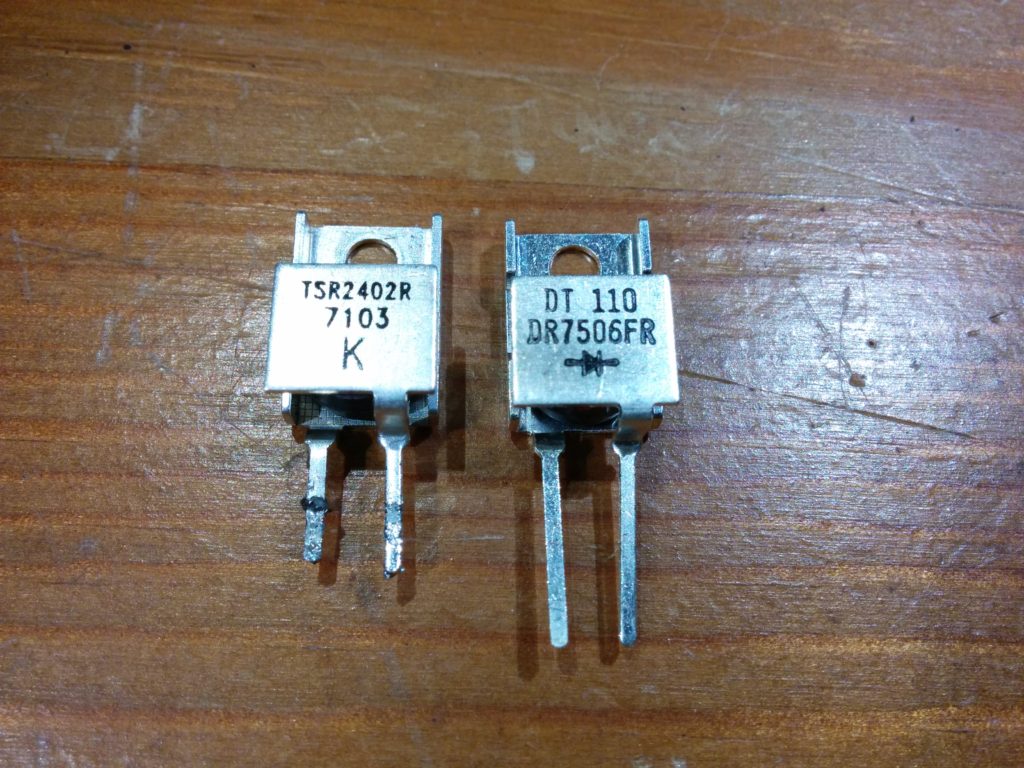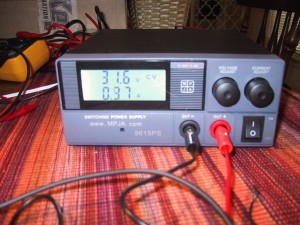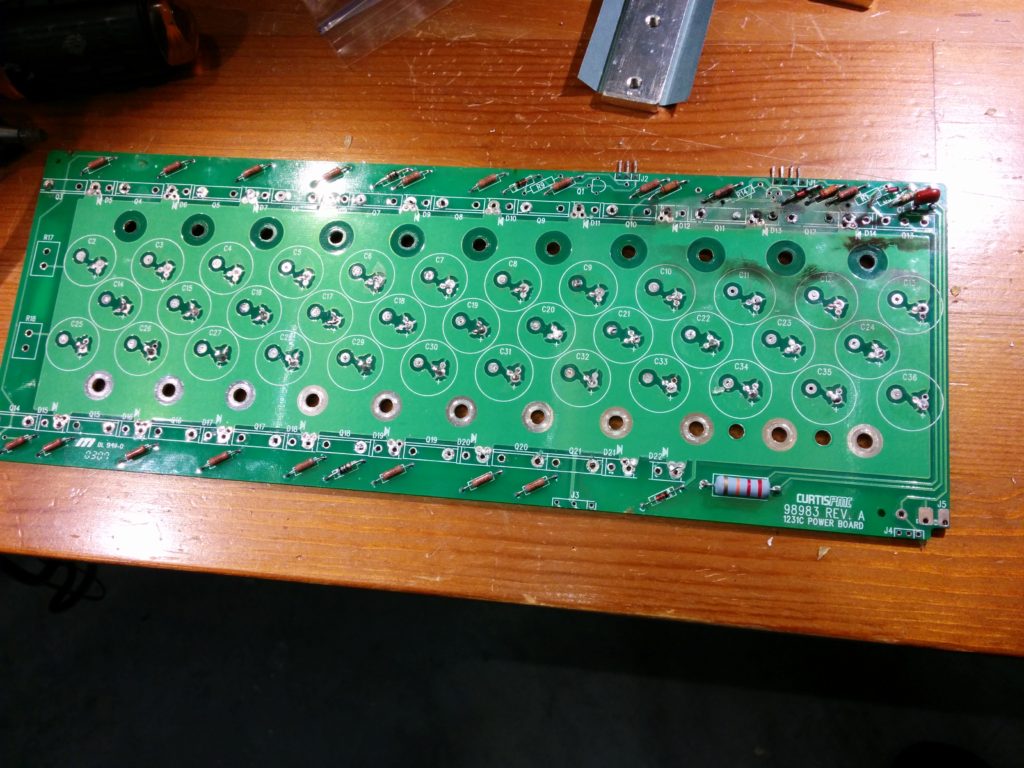I am looking to replace the MOSFETS, diodes, and capacitors in my Curtis 1231c with upgraded components. I unsoldered one of the existing TSR2402R (7103 K) diodes from the power board and tested it with my Fluke meter and bench power supply.
Here are my results:
Power Supply providing 3.2A, forward voltage drop: 0.776 volts
Power Supply providing 2.0A, forward voltage drop: 0.737 volts
Power Supply providing 1.0A, forward voltage drop: 0.697 volts
Fluke Diode Setting: 0.351 vdc
Average time for the button temperature to raise from 25 °C to 50 °C with a 3.2A current: 45 seconds
The replacement parts I purchased were from DIOTEC, specifically their DR7506FR model (the R at the end means “Reverse Polarity”, making them an exact drop in replacement in form factor and polarity). They were marked: “DT110 DR7506FR” plus a diode schematic. Here are my results for the upgraded component:
Power Supply providing 3.2A, forward voltage drop: 0.754 volts
Power Supply providing 2.0A, forward voltage drop: 0.700 volts
Power Supply providing 1.0A, forward voltage drop: 0.646 volts
Fluke Diode Setting: 0.399 vdc
Average time for the button temperature to raise from 25 °C to 50°C with a 3.2A current: 47.5 seconds
Of course, the original diode I’m measuring had been in use for many years (I estimate ~750 hours of driving time given the 22K miles) and was heated up as part of the soldering and unsoldering process, while the DR7506FR I tested was brand new straight from the manufacturer. After I unsolder a few more diodes I’ll check them to make sure their readings are similar. (I’ll probably also test a few other DR7506FR diodes from the bag as well.)
Of all the measurements, the temperature rise time measurement was the least scientific, as I was using an inexpensive non-contact IR thermometer and attempting to point it at a small button in each diode, waving it back and forth to find the hottest temperature. I took 4 measurements on each diode (alternating to let the other one cool down) and averaged them together. In general, the readings from the DR7506FR were longer than from the original TSR2402R with one exception. If I throw out that pair of readings, the averages would be 46 seconds vs 50 seconds. Given that the measured forward voltage drop for the DR7506FR was lower for any real amperage readings, it dissipating less power and taking longer to rise to 50 °C appears to be reasonable.



